MGAT5
-
Official Full Name
mannosyl (alpha-1,6-)-glycoprotein beta-1,6-N-acetyl-glucosaminyltransferase -
Synonyms
MGAT5;mannosyl (alpha-1,6-)-glycoprotein beta-1,6-N-acetyl-glucosaminyltransferase;alpha-1,6-mannosylglycoprotein 6-beta-N-acetylglucosaminyltransferase A;GNT V;glcNAc-T V;N-acetylglucosaminyl-transferase V;mannoside acetylglucosaminyltransferase 5
| Cat.# | Product name | Source (Host) | Species | Tag | Protein Length | Price |
|---|---|---|---|---|---|---|
| MGAT5-1120H | Active Recombinant Human MGAT5 protein, His-tagged | HEK293 | Human | His | Leu189-Leu741 | |
| MGAT5-4300Z | Recombinant Zebrafish MGAT5 | Mammalian Cells | Zebrafish | His |
|
|
| MGAT5-2067HCL | Recombinant Human MGAT5 cell lysate | Human Cells | Human | Non |
|
|
| MGAT5-04H | Recombinant Human MGAT5 Protein (AA 31-741), N-6×His/GFP tagged | HEK293 | Human | GFP&His | AA 31-741 |
|
| MGAT5-4363H | Recombinant Human MGAT5 Protein, GST-tagged | Wheat Germ | Human | GST |
|
|
| RFL25525RF | Recombinant Full Length Rat Alpha-1,6-Mannosylglycoprotein 6-Beta-N-Acetylglucosaminyltransferase A(Mgat5) Protein, Tag-Free | E.coli | Rat | Non | Full L. Full Length (1-740) |
|
Background
What is MGAT5 Protein?
MGAT5 is a protein that's pretty crucial when it comes to how cells function, specifically in making complex N-glycans, which are essential sugar chains found on proteins. Think of these glycan chains as tiny communication tags that help proteins interact properly with other molecules in the body. MGAT5 steps in as an enzyme, adding branches to these sugar chains that can affect everything from cell signaling to immune responses. When MGAT5 isn’t working right, it can lead to a mix of health issues, including impacts on cancer progression and immune system function. Researchers are especially interested in MGAT5 because tweaking how it works might open doors to new treatments for diseases where cell communication goes haywire.What is the Function of MGAT5 Protein?
MGAT5 is like a molecular artist, adding branches to sugar chains, or glycans, on proteins. These chains are pretty crucial for managing how proteins communicate and function in our bodies. By branching these glycans, MGAT5 affects cell signaling pathways, which are vital for everything from immune responses to how cells stick together. When MGAT5 is off its game, things can get messy, with potential links to cancer spread or immune system glitches. Scientists are diving into how MGAT5 operates because understanding its role could lead to breakthroughs in treating diseases where cell communication and signaling go off track.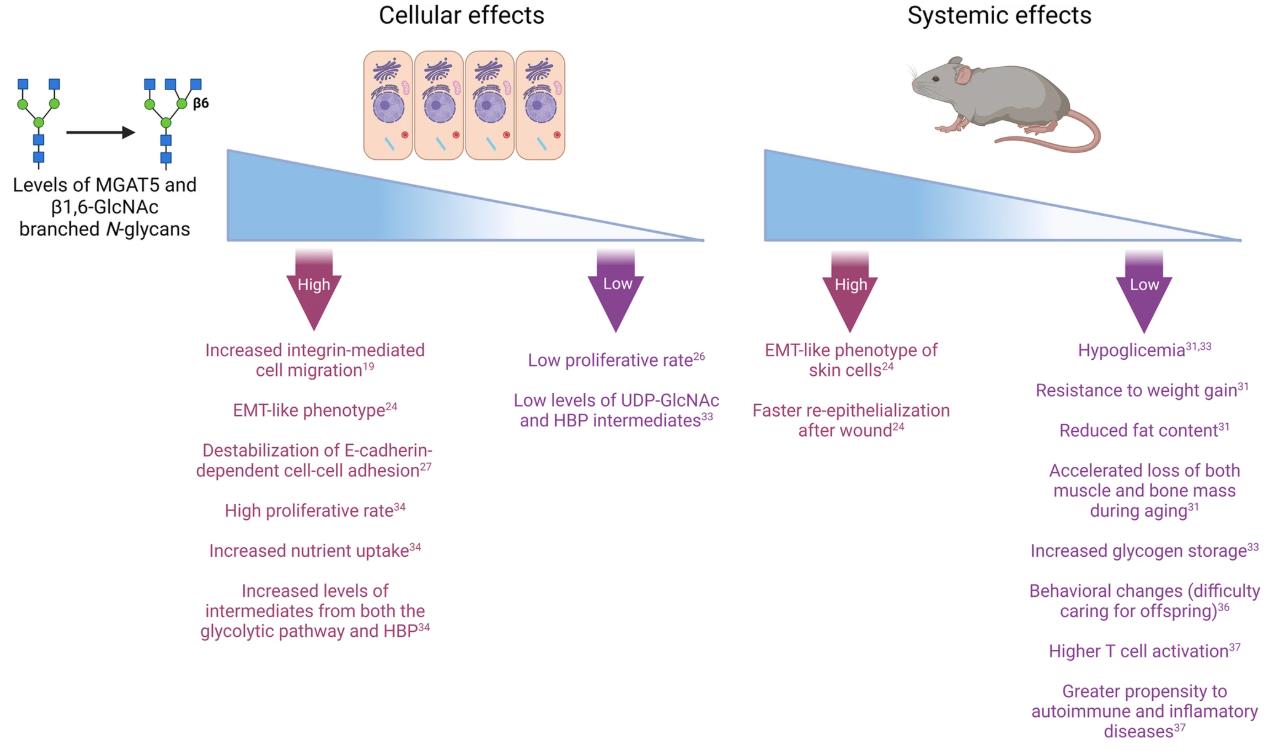
Fig1. Cellular and systemic consequences related to differences in the levels of MGAT5 and β1,6-GlcNAc branched N-glycans. (Michelle de-Souza-Ferreira, 2023)
MGAT5 Related Signaling Pathway
MGAT5 is a key player in specific signaling pathways that keep our cells chatting and functioning smoothly. One of its major gigs involves the β-catenin pathway, where it plays a part in managing cell growth and development. When MGAT5 tweaks the branching of sugars on proteins, it influences how β-catenin gets to the cell nucleus and does its job. This action affects genes that are crucial for cell growth and differentiation. Another important pathway MGAT5 interacts with is the BMP/TGF-β signaling route, which is vital for processes like bone formation and immune responses. If MGAT5 goes off track, these pathways can misfire, potentially stirring up trouble like abnormal cell growth or bad immune reactions. Researchers are really digging into these pathways because finding out how to modulate MGAT5's role could open up new avenues for treating diseases where these signaling routes go haywire.MGAT5 Related Diseases
MGAT5 is connected to a bunch of health issues because of its role in cell signaling and protein interactions. One of the big areas where MGAT5 comes into play is cancer. When MGAT5 goes rogue, it can influence the progression and spread of cancer. It’s thought to help cancer cells evade the immune system and grow unchecked by changing how proteins communicate on the cell surface. MGAT5 is also linked to autoimmune diseases, where the body’s defense system goes a bit haywire and starts attacking itself. It can affect how immune cells interact, potentially triggering destructive immune responses. Researchers are really interested in MGAT5 because figuring out how it works and how it can misbehave might lead to new ways to treat or even prevent these diseases. Understanding MGAT5 could be a big step towards unraveling complex health conditions linked to this protein.Bioapplications of MGAT5
MGAT5 has some pretty exciting potential in the world of bioapplications, especially given its impact on cellular interactions and signaling pathways. Scientists are exploring how MGAT5 can be leveraged in regenerative medicine and cancer therapy. For instance, tweaking MGAT5 activity might improve how stem cells develop into different tissue types, which could be a big deal for repairing damaged organs or tissues. In cancer therapy, understanding MGAT5’s role in helping cancer cells dodge the immune system could lead to new strategies to make treatments more effective. There’s also interest in using MGAT5 to modify glycan structures on therapeutic proteins, enhancing their stability and efficacy. Overall, MGAT5 holds promise as a tool for both understanding and intervening in complex biological systems, making it a hot topic in biomedical research.Case Study
Case Study 1: Huang HC. et al. Oncogenesis. 2024
Immunotherapy has revolutionized cancer treatment, but predicting response is tricky. MGAT5, tied to cancer growth, interacts with PHA-L. In head and neck cancers, high PHA-L means active MGAT5. Researchers found more MGAT5 in tumors, affecting 163 proteins linked to T cell activity. PD-L1 gains protection via MGAT5, shielding tumors from T cells. Nivolumab disrupts this, aiding patients with MGAT5-positive tumors. This study highlights how MGAT5's glycan branches on PD-L1 influence immune checkpoints, crucial for immune response.-
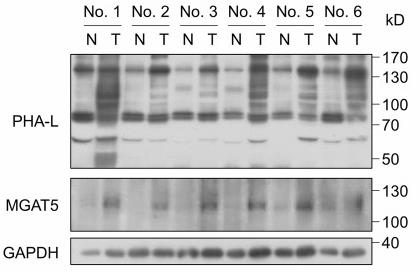 Fig1. Western blot analysis of PHA-L staining and MGAT5 expression in 6 paired HNSCC tumors (T) and adjacent non-tumor tissues (N).
Fig1. Western blot analysis of PHA-L staining and MGAT5 expression in 6 paired HNSCC tumors (T) and adjacent non-tumor tissues (N). -
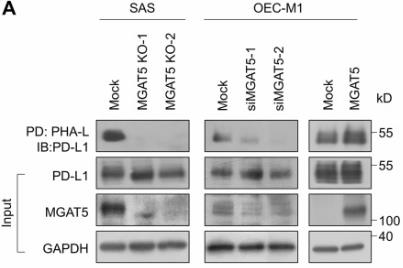 Fig2. Lectin pull-down assay.
Fig2. Lectin pull-down assay.
Case Study 2: Liu XP. et al. Exp Anim. 2023
Osteoporosis happens when bone breakdown outpaces formation. In MGAT5-deficient mice, bone marrow shows less bone-building activity. We think MGAT5 plays a role in how stem cells develop into bone cells, impacting osteoporosis. In tests, ovariectomized mice (a model for study) showed less MGAT5, losing bone density and markers like runt-related transcription factor 2. Reducing MGAT5 in stem cells cut their development into bone cells, shown by fewer bone markers and staining tests. It also blocked β-catenin movement to the nucleus, affecting genes tied to bone growth, and interfered with BMP/TGF-β signaling.-
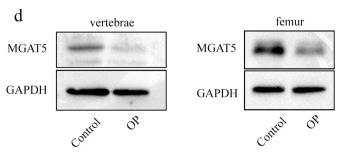 Fig3. Representative western blot images of MGAT5 expression in vertebrae and femur.
Fig3. Representative western blot images of MGAT5 expression in vertebrae and femur. -
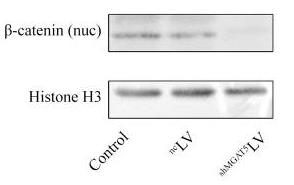 Fig4. Representative western blot showed the relative expression level of β-catenin in the control group, the ncLV group and the shMGAT5LV group.
Fig4. Representative western blot showed the relative expression level of β-catenin in the control group, the ncLV group and the shMGAT5LV group.
Quality Guarantee
High Purity
-
.jpg) Fig1. SDS-PAGE (MGAT5-04H)
Fig1. SDS-PAGE (MGAT5-04H) -
.jpg) Fig2. SDS-PAGE (MGAT5-4363H)
Fig2. SDS-PAGE (MGAT5-4363H)
Involved Pathway
MGAT5 involved in several pathways and played different roles in them. We selected most pathways MGAT5 participated on our site, such as N-Glycan biosynthesis,Metabolic pathways, which may be useful for your reference. Also, other proteins which involved in the same pathway with MGAT5 were listed below. Creative BioMart supplied nearly all the proteins listed, you can search them on our site.
| Pathway Name | Pathway Related Protein |
|---|---|
| Metabolic pathways | BCKDHA,AOX4,PI4K2B,NNMT,PSAT1,GLS2,NT5C2B,ATP5I,CYP2U1,EXT1B |
| N-Glycan biosynthesis | GANAB,ALG10,ZNF408,DPAGT1,RPN2,MGAT2,MAN1B1,ALG8,ALG9,B4GALT1 |
-
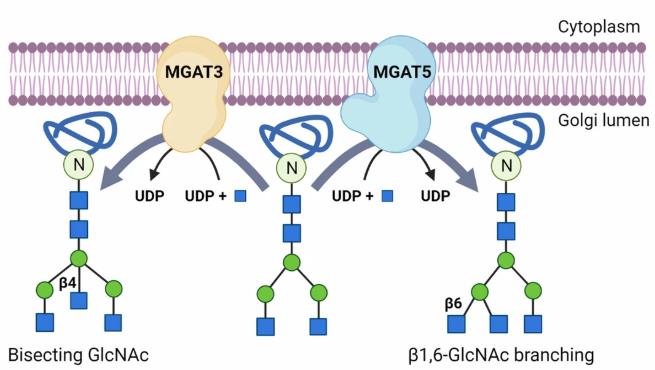 Fig1. Action of MGAT3 and MGAT5 enzymes on the Golgi apparatus. (Michelle de-Souza-Ferreira, 2023)
Fig1. Action of MGAT3 and MGAT5 enzymes on the Golgi apparatus. (Michelle de-Souza-Ferreira, 2023) -
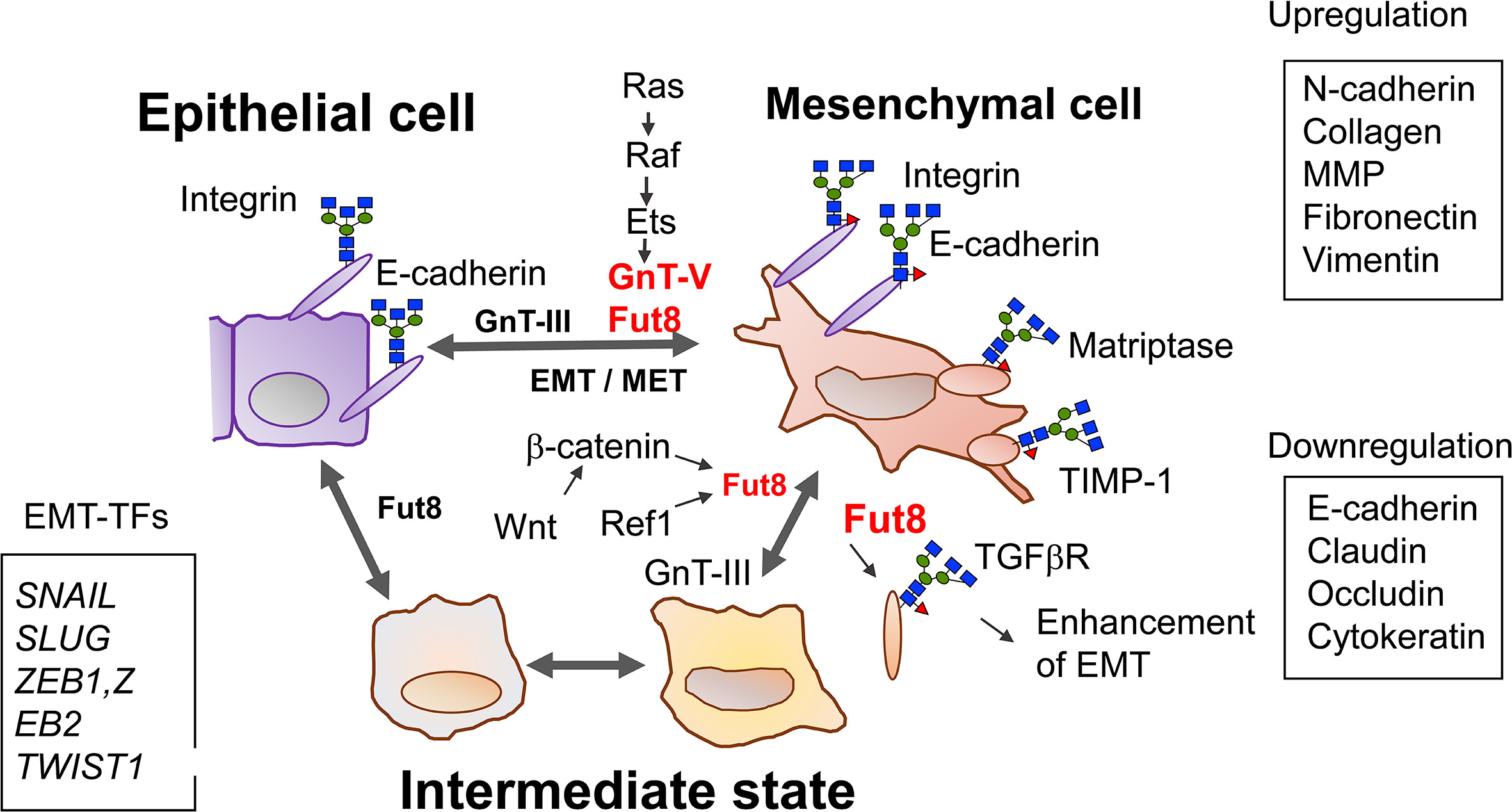 Fig2. Opposite effects of GnT-V, FUT8, and GnT-III in terms of EMT programs. (Naoyuki Taniguchi, 2021)
Fig2. Opposite effects of GnT-V, FUT8, and GnT-III in terms of EMT programs. (Naoyuki Taniguchi, 2021)
Protein Function
MGAT5 has several biochemical functions, for example, alpha-1,6-mannosylglycoprotein 6-beta-N-acetylglucosaminyltransferase activity. Some of the functions are cooperated with other proteins, some of the functions could acted by MGAT5 itself. We selected most functions MGAT5 had, and list some proteins which have the same functions with MGAT5. You can find most of the proteins on our site.
| Function | Related Protein |
|---|---|
| alpha-1,6-mannosylglycoprotein 6-beta-N-acetylglucosaminyltransferase activity | MGAT5B,CCDC126 |
Interacting Protein
MGAT5 has direct interactions with proteins and molecules. Those interactions were detected by several methods such as yeast two hybrid, co-IP, pull-down and so on. We selected proteins and molecules interacted with MGAT5 here. Most of them are supplied by our site. Hope this information will be useful for your research of MGAT5.
q7cj99_yerpe
Resources
Related Services
Related Products
References
- Dos-Santos, PB; Zanetti, JS; et al. Lectin histochemistry reveals SNA as a prognostic carbohydrate-dependent probe for invasive ductal carcinoma of the breast: a clinicopathological and immunohistochemical auxiliary tool. INTERNATIONAL JOURNAL OF CLINICAL AND EXPERIMENTAL PATHOLOGY 7:2337-2349(2014).
- Blomme, B; Heindryckx, F; et al. Serum protein N-glycan alterations of diethylnitrosamine-induced hepatocellular carcinoma mice and their evolution after inhibition of the placental growth factor. MOLECULAR AND CELLULAR BIOCHEMISTRY 372:199-210(2013).


